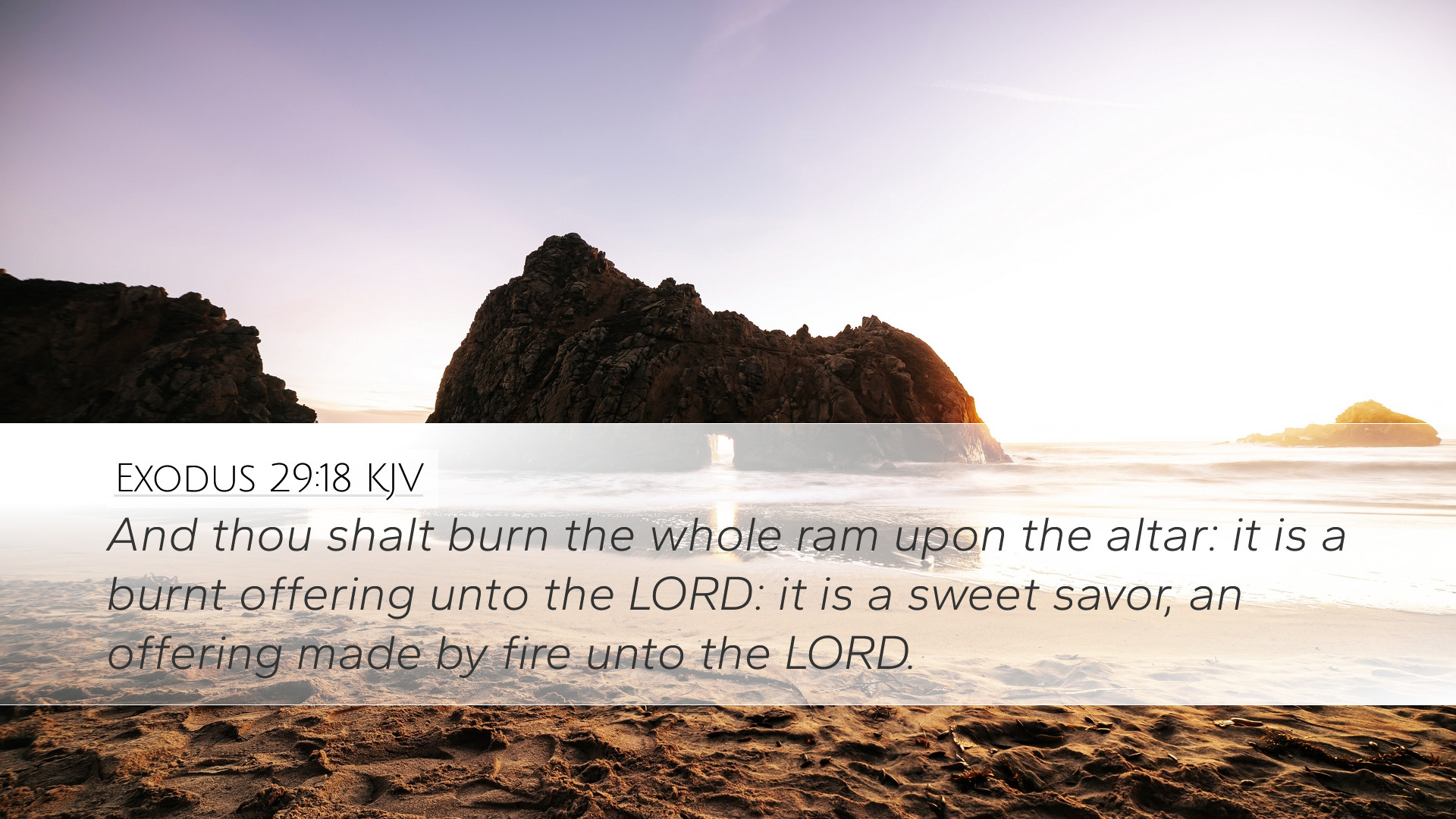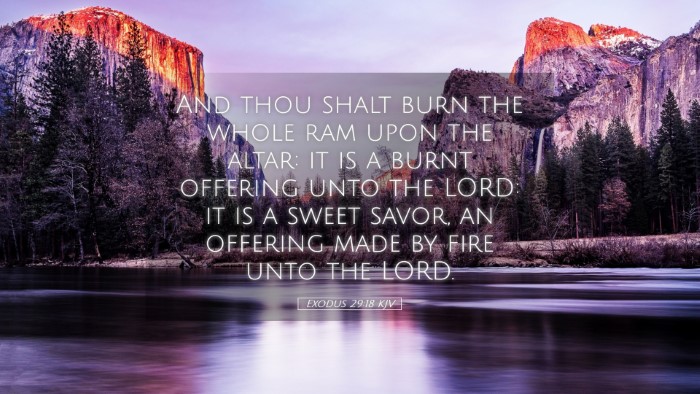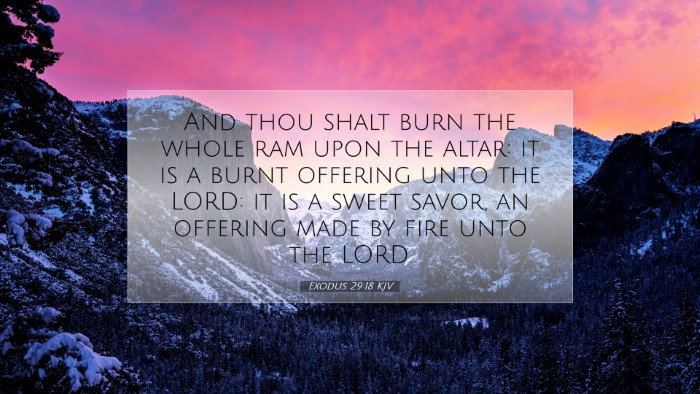Commentary on Exodus 29:18
Text: "And thou shalt burn the whole ram upon the altar: it is a burnt offering unto the LORD: it is a sweet savor, an offering made by fire unto the LORD."
Introduction
In Exodus 29:18, we encounter a profound directive regarding the sacrificial system established under the Law of Moses. This verse emphasizes the nature of burnt offerings, illustrating their significance not only for the priestly ordination but also for communal worship and atonement. The analysis of this text draws insights from renowned public domain commentaries, enriching our understanding of its theological implications.
The Nature of the Burnt Offering
Matthew Henry elucidates that the burnt offering represents total dedication to God. Unlike other sacrifices, where specific portions were consumed or given to the priests, the entire ram was to be burned upon the altar, symbolizing the complete yielding of oneself to God's service and glory. This act signifies the worshipper’s desire to be wholly consumed in service to God, drawing a parallel to the Christian concept of presenting one's body as a living sacrifice (Romans 12:1).
Albert Barnes notes that the phrase "sweet savor" indicates that the offering was pleasing to God. This suggests that God finds delight in the act of dedication and the heart's intent behind the sacrifices. The burnt offering was not merely a ritualistic practice; it represented a profound relational commitment to God, aligning with the idea that genuine worship is grounded in both action and intention.
The Symbolism of Fire
Adam Clarke highlights the significance of fire in the sacrificial process. Fire has a dual role in Scripture: it serves as a purifying agent and a divine presence. In this context, the fire consuming the burnt offering symbolizes God's acceptance and sanctification of the sacrifice. It also reflects the holiness required for approaching God.
-
Purification: The fire represents the purging or atoning for sin, making the worshipper fit to enter into God’s presence. The complete consumption of the ram signifies the totality of the act of atonement.
-
Divine Presence: Fire, as seen in the encounter of Moses with the burning bush, indicates God's holy presence. Thus, the act of burning the offering on the altar symbolically brings the offerer into communion with God.
Historical Context and Practical Application
The historical context of the burnt offerings reflects a time when animal sacrifices were integral to Israel's worship practices. These offerings were not merely ritualistic; they encapsulated deep spiritual truths about sin, atonement, and reconciliation with God. For modern practitioners of faith, the implications of this verse urge a commitment to total surrender to God’s will.
Pastors and spiritual leaders can draw parallels from this ancient practice to contemporary worship. Just as the ram was wholly consumed, believers are called to offer their lives as living sacrifices, embodying a holistic devotion that extends beyond mere rituals to true heart service.
Theological Reflections
In examining Exodus 29:18 through a theological lens, we recognize the role of offerings in understanding God’s character and the depth of human sin. This verse affirms that while humanity often falls short, God's provision for atonement through animal sacrifices points forward to the ultimate sacrifice of Christ.
In the New Testament, the concept of a "sweet savor" transcends the Levitical offerings, finding fulfillment in Christ, who embodied the perfect sacrifice. Just as the burnt offering was pleasing to God, so too did Christ’s obedience and sacrifice on the cross provide a way for reconciliation for all of humanity.
Conclusion
Exodus 29:18 encapsulates essential truths about atonement, dedication, and divine acceptance. The insights from Matthew Henry, Albert Barnes, and Adam Clarke provide a rich, multifaceted understanding that is not only historically significant but also applicable to modern worship practices. As we engage with this Scripture, may we perceive the call to be wholly devoted to God, reflecting on what it means to present ourselves as living sacrifices in light of Christ's finished work.


